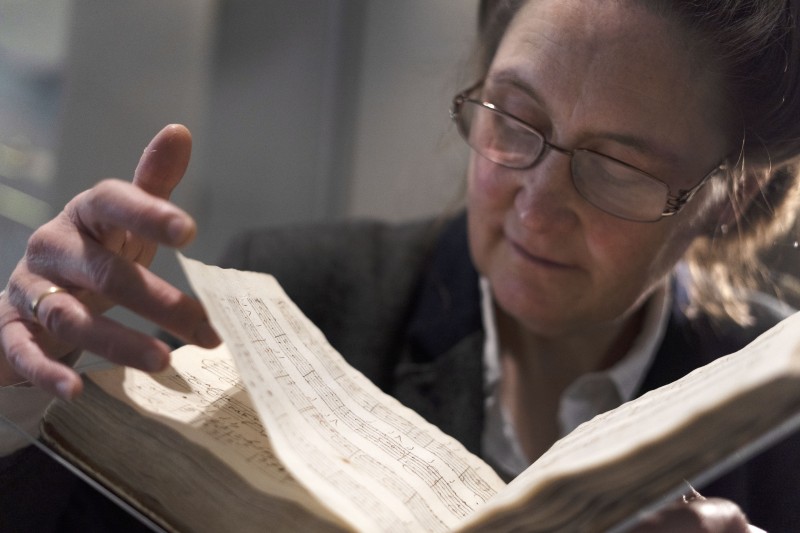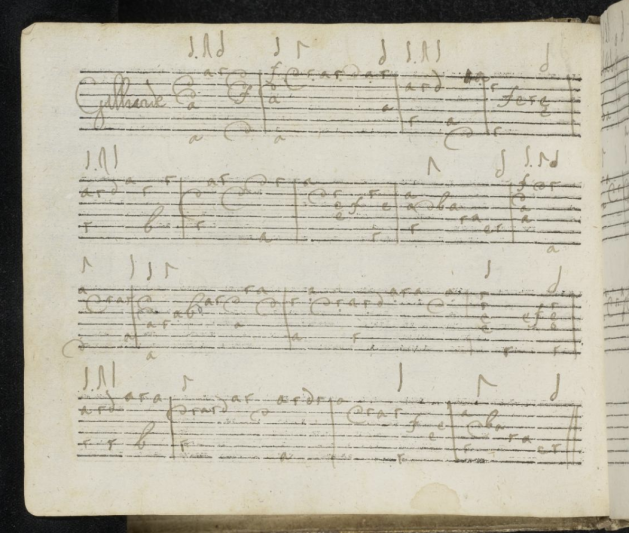Elizabeth Quarmby Lawrence, Rare Books Librarian, writes: The University of Edinburgh is very grateful to the FNL for generously supporting the acquisition of this exceptional music manuscript, which offers such great opportunities for teaching and research, particularly in the context of the musical instruments in the collection at St Cecilia’s Hall.
The manuscript was once owned by Arnold Dolmetsch (1858-1940), one of the founders of the Early Music movement, and as part of his collection of books and instruments has been available to scholars for over a century. The manuscript was initially sold to a foreign buyer at Sotheby’s in September 2021 and shortly thereafter the Culture Minister placed a temporary export bar on the item. Following a successful fundraising campaign, the University bought the manuscript in October 2022.
The lute was one of the most popular instruments of the 16th and 17th centuries. It was used for almost every genre of music and in almost every possible ensemble. Musicians of the time worked internationally, and their music was circulated, mostly in manuscript, right across Europe. This volume is an important source of the popular dance music of the period, and an important witness to the transmission of that music across the continent, containing 320 works, 89 of which are not found in any other manuscript. It was made in Bavaria in about 1620, but a great deal of the music is French in origin and in the French style, while the largest number of pieces with a named composer are by Michelangelo Galilei (1575-1631) who was Italian but worked at the Bavarian Court. British music is represented, with a few pieces marked as ‘D’Angleterre’, or ‘Anglum’, but most significantly with an adapted version of John Dowland’s most famous work, the Lachrimae pavan (fol.225v-227v), and his ‘Piper’s Galliard’ (fol.92r-93v). The notation in the manuscript is French lute tablature – a system similar to modern guitar tabs – but whoever copied it may have been more comfortable with the Italian system of tablature, as a few pieces change into that part way through.
Following acquisition the manuscript was placed on public display at the University’s historic St Cecilia’s Hall Concert Room and Music Museum, alongside a lute from circa 1620. The manuscript is now undergoing minor conservation treatments and will shortly be digitised and made freely accessible online. Plans are also being drafted to undertake in-depth academic research and a modernising of the tablature, which in turn will facilitate public musical performance.

